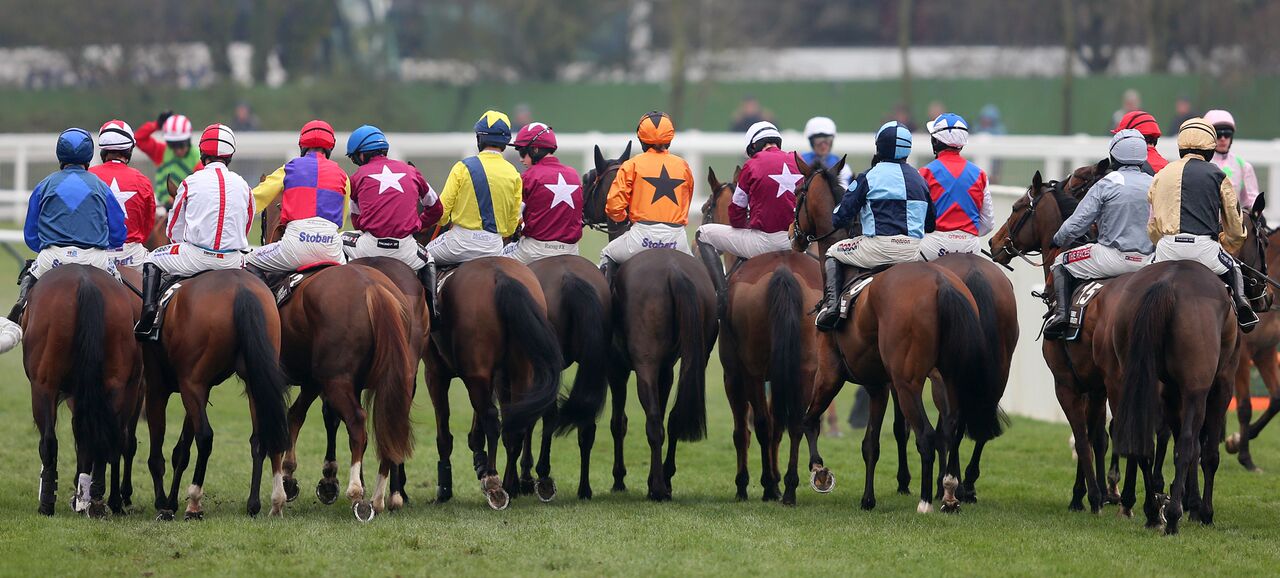Andy Gibson is a regular TV pundit for At The Races, specialising in the major festivals, particularly the Cheltenham Festival.
Gibson’s sophisticated and unique analysis of racing is the culmination of more than three decades of observation, reflection and analysis of racing data such as going, sectional times, track configuration, pace, field size, the effect of hype on the betting market, comparison times plus many other variables that govern and shape the way racehorses perform and betting opportunities unfold.
Andy has developed the Cheltenham Trail and his Diary Notes Service so that subscribers can receive the benefit of many hours of research into each race and a lifetime’s experience aimed at achieving best value and ultimately successful punting.
The previews, reviews and notes have proven to be equally useful to independent bookmakers, in particular when deciding which of the shorter priced runners to oppose.
Q – How do you decide whether to back win or each-way, and how many horses to back in a race?
It all depends on the maths, the number of runners, number of shortlisted horses and the timing.
Q – Do you lay off your bets when you get a shortener or do you let it ride?
It depends on my belief before the race. If I think the horse in question can get to the top of the hill in front but do not have any strong opinion either way as to what might happen after that point – I will trade accordingly. On the other hand, if I think an outsider has a much better chance of placing compared with his odds I might prefer to stand the bet especially if he is a hold up horse. (Therefore more likely to only shorten up when his chances of placing appears to be much more obvious than the lay price on offer)

Q – Do you do accumulators and if so, what is your approach?
I play a lot of each way multiple bets as they have served me very well over the years. The place part of the bets are potentially enough in themselves to make a big profit – whilst the win part is an occasional bonus.
Q – How much do you listen to trainers vibes? (perhaps an example of where it worked and maybe where it didn’t).
It depends on the trainer or jockey. I could not give any specific examples because I would only see inside information as peripheral info which I prefer to look at after I have finished my analysis. This is especially true for the festival as all horses are trying their best so analysis wins over gossip every time for me. Conversely, I might be more interested if a connection I respect tells me they are struggling with a short priced favourite’s wellbeing. If I am already backing the second favourite each way I might conceivably increase my stake in such circumstances.
Q – How much time do you spend re-watching races and how do you use that process for finding winners?
I spend two or three hours on a Saturday after the last race. I usually do a half day on a Sunday and then spend most of Monday to Wednesday focussing on the previous week’s horses. These go in my diary notes on my Cheltenham Trail work. I tend to bet more from Thursday to Sunday.
Q – What’s your favourite type of race from a betting point of view and what is the edge you have on the market in that race?
I prefer the better quality of National Hunt races from mid-October until early May. The edge I have – if indeed I have any at all!! – is that I am able to devote my whole working life each week during those months. I would like to think that this enables me to understand what is going on more than most punters do. I might well be very wrong about this notion of course.
Q – What single mistake do you think hinders most amateur punters in Cheltenham Festival betting?
I am not sure how qualified any of us are to answer that one as we are all capable of making repeated persistent errors. One thing I would like to say with regards to the festival is that however much impact hype plays on the betting markets on run of the mill betting days; we can multiply that impact value by hundreds when considering the festival markets. The hype (via number of column inches, trainer interviews etc) tends to play a much bigger role at the top end of the market when dealing with horses with the sexiest profiles. Therefore, a horse trained by Willie Mullins and ridden by Ruby Walsh will often have a decent chance of winning any given race; however, that horse will almost always be trading at a price that is shorter than his profile merits.
Q – What’s your most successful Festival bet and what inspired it?
I have done very well at many of the last 20 plus festivals. The most successful ones are the odd occasions when the win part happens to be successful in any each way multiple bets I have played.
Q – How much attention do you pay to stable form in the run up to the meeting (and in the early part of the week)?
I take notice of stable form throughout the season. I know enough about it to know that we are just as likely to be fooled by 14 day stats as not. The form of a stable is about much more than just the number of one’s by a trainers name in the last 14 or 21 days. Any numbered stats can only act as a starting point for our research rather than the beginning and end of it.
Q – How much emphasis do you place on jockeys and can you give us a couple of underrated jockeys from a Festival point of view?
In terms of the festival markets I think that most jockeys will tend to be underrated in the betting compared with the top two or three riders mainly due to the extra attention they enjoy from the media plus their higher strike rates..
Q – Do you take much notice of other professionals’ views or do you find they distract you and you like to keep a clear mind to form your own opinions?
I have a small number of friends in the racing business that I enjoy swapping thoughts with from time to time.
Q – The Irish now win approximately half the races at the Festival and the majority of the Grade 1s. How do you compare British and Irish form when analysing Festival races?
Often with great difficulty. I certainly would not recommend a pounds per lengths approach! The question you asked is rather overly slanted on a narrow band of time I think. This is very understandable as our minds do tend to favour those memories which are easiest to retrieve. We actually only have to go back to 2012 when the Irish won just 3 of the 14 graded races to see that these stats can be very fluid and unstable. If Willie Mullins only manages one winner at the 2016 festival we might have a very different feel to the early markets for the 2017 festival. Just because one trainer has enjoyed a particularly good time of it in the last two or three years does not mean that he will automatically do the same again this year. He might well do – but it is far from a given. We will be better off if we continue to take each horse, each race, each day and each festival in isolation
Q – What Willie Mullins markets interest you and what advice would you give to punters interested in playing them?
As mentioned earlier all the favourites from that yard will tend to be shorter than they deserve in the betting. On the other hand, the second and third strings from the same stable are always worth looking at closely as they can get a little bit forgotten about.
For those of you interested in reading more about Andy or subscribing to one of his services including the Cheltenham Trail, please CLICK HERE
